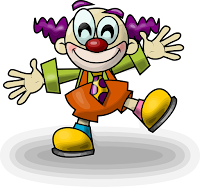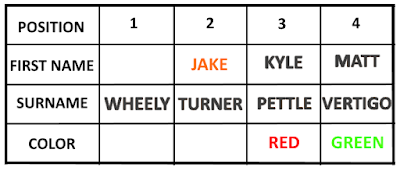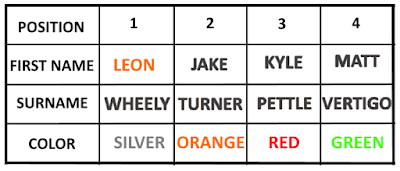What was the challenge in front of him?
Let's denote red by R and green by G. Then, each can have combination of RR, RG or GG.
So, there are total
27 combinations are possible.
1. RR RR GG
2. RR GG RR
3. GG RR RR
4. GG GG RR
5. RR GG GG
6. GG RR GG
7. RR RG GG
8. GG RG RR
9. RG RR GG
10.RG GG RR
11. RR GG RG
12. GG RR RG
13. RR RG RG
14. GG RG RG
15. RG RR RG
16. RG GG RG
17. RG RG RR
18. RG RG GG
19. RR RR RG
20. GG GG RG
21. RG RR RR
22. RG GG GG
23. RR RG RR
24. GG RG GG
25. RR RR RR
26 .GG GG GG
27. RG RG RG.
-------------------------------------------------------------------------------------------------------------------------
1. Now, obviously
(19) to
(26) are
invalid combinations as those have more than 4 red or green stamps.
-------------------------------------------------------------------------------------------------------------------------
2. In first round, everybody said
'NO' thereby eliminating
(1) to
(6) combinations. That's because, for example, if C had seen all red (or all green) then he would have known color of own stamps as GG (or RR). Similarly, A and B must not have seen
all red or
all green.
-------------------------------------------------------------------------------------------------------------------------
3. For
(9 - RG RR GG), A would have responded correctly at second round as
NO of B had eliminated GG and NO of C had
eliminated RR for A in first round. Similarly,
(10) is eliminated.
-------------------------------------------------------------------------------------------------------------------------
4. For
(11 - RR GG RG ), C would would have responded correctly immediately after
NO of A had eliminated
GG and NO of B had eliminated RR for him in first round. With similar logic,
(12) also get eliminated.
-------------------------------------------------------------------------------------------------------------------------
5. Remember,
B has guessed color of own stamps only in
second round of questioning.
-------------------------------------------------------------------------------------------------------------------------
6. For B in
(13), his logic would be I can't have RR (total R>4) but GG [ No.(11) - RR GG RG] and RG can be possible. But
(11) is eliminated by C's response in first round. That leaves,
(13) in contention.
-------------------------------------------------------------------------------------------------------------------------
7. Similarly, if it was
(14 - GG RG RG) combination, then B's thought would be - I can't have GG (total G>4) but can have RR as in (12) - GG RR RG which is already eliminated by C's NO response at the end of first round. Hence, I must have RG. That means
(14) also remains in contention.
-------------------------------------------------------------------------------------------------------------------------
8. On similar note,
(17),
(18) remains in contention after A's NO at the start of second round.
-------------------------------------------------------------------------------------------------------------------------
9. If it was
(15), then A would have been responded with RG when C's NO in first round eliminates RR (as proved in 2 above) and GG (as proved in 4 above) both. Similarly,
(16) is also eliminated after C's NO in first round as above.
-------------------------------------------------------------------------------------------------------------------------
11. For
(27), B's logic would be -
"If I had RR then A must had seen RR-RG and had logic -
"Can't have RR (total R>4); if had GG then C would have answered with RG after I and B said NO in first round itself. Hence, I must tell RG in second round."
Similarly, A's response at the start of second round eliminates GG for me.
Hence, I must have RG combination."
-------------------------------------------------------------------------------------------------------------------------
10. So only
possible combinations left where only B can deduce color of own stamps are -
7. RR RG GG
8. GG RG RR
13. RR RG RG
14. GG RG RG
17. RG RG RR
18. RG RG GG
27. RG RG RG.
If observed carefully all above, we can conclude that B must have
RG color combination of stamps after observing A's and C's stamps as above to correctly answer in the second round.
-------------------------------------------------------------------------------------------------------------------------




















